Rodent Control
Rodents get more pest control callouts than any other pest, but it's possible to save money by dealing with them yourself. Rats and mice carry dangerous diseases so shouldn't be taken lightly, so make sure to pick up our professional-quality rodent control products and read our buyer's guide below.
No products found
Rodent Control
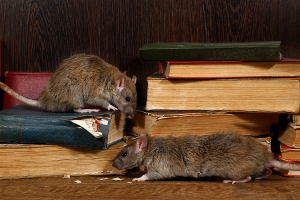 Rodents are currently the number one cause of pest control callouts in the UK by some distance. Rats and mice make up a whopping 51% of all pest control callouts, so it doesn’t look like these crafty creatures aren’t going anywhere at present. Rats have a well-earned reputation for spreading dirt and disease wherever they go, so if you’re concerned that you may have a rat problem, you’ll want to read the guide on identifying and getting rid of them!
Rodents are currently the number one cause of pest control callouts in the UK by some distance. Rats and mice make up a whopping 51% of all pest control callouts, so it doesn’t look like these crafty creatures aren’t going anywhere at present. Rats have a well-earned reputation for spreading dirt and disease wherever they go, so if you’re concerned that you may have a rat problem, you’ll want to read the guide on identifying and getting rid of them!
It’s important to know your enemy when it comes to rats and mice. Like many pests that we deal with, there are a few different species of rodents in the UK. However, unlike other pests, the size of these species can vary wildly. If you think you have a mouse problem when you’re actually dealing with brown rats, you might end up using traps and poison doses that are too small to work properly.
UK Rat Species
There are two species of rats in the UK; brown rats and black rats. Neither is native to the UK – black rats were brought here thousands of years ago by trading ships, while brown rats arrived from Russia in the 18th century. Their names give you a clue about one big difference between them, but there are a few others you should know about.
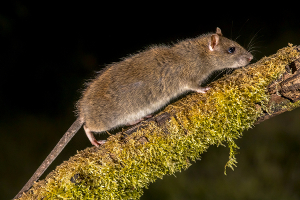 Brown Rats
Brown Rats
Brown rats are much more common than their black cousins. They’re bigger, faster, stronger, and have adapted to the cold British climate better, meaning they’ve basically muscled the black rats out.
You can identify a brown rat by its scaly tail, hair-covered ears, and thick, brownish-grey fur. They like to live in burrows near water but will happily live anywhere they can find food and water. You can find them anywhere in the home – they can live in cellars, attics, wall cavities, gardens, and in the sewers beneath your property.
Black Rats
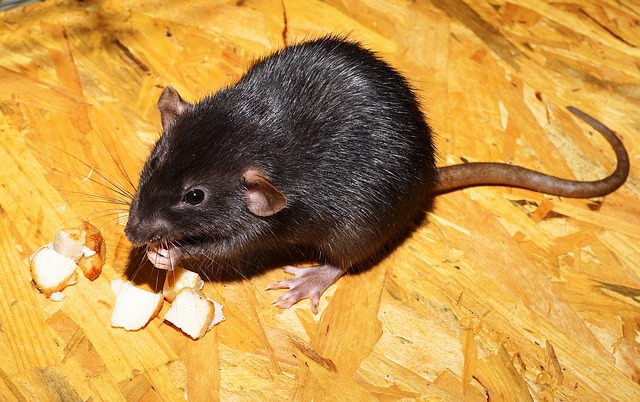 Black rats are now considered to be quite rare in the UK. They’re smaller than brown rats and have a longer, thinner tail. Despite the name, black rats can range from black to grey to dark brown in colour, so it’s possible to confuse them with brown rats unless you look closely. A dead giveaway is their ears – black rats have hairless ears.
Black rats are now considered to be quite rare in the UK. They’re smaller than brown rats and have a longer, thinner tail. Despite the name, black rats can range from black to grey to dark brown in colour, so it’s possible to confuse them with brown rats unless you look closely. A dead giveaway is their ears – black rats have hairless ears.
They’re also known as roof rats as they much prefer to live in high places. If you notice that your rat problem is mainly occurring in your attic, it could well be that you have black rats.
UK Mouse Species
There are many species of mouse in the UK, but most – like the harvest mouse – will shy away from human habitats and aren’t considered pests. There are only really three who’ll cause you problems – house mice, field mice (also known as wood mice), and yellow-necked mice.
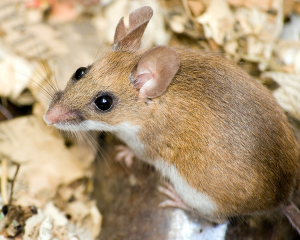 Field Mice
Field Mice
The field mouse is the most common kind of mouse you’ll find. They’re much smaller than rats (all mice are) and have grey fur with white bellies. However, you’ll rarely catch sight of the mice themselves as they’re small, fast, and skilled at hiding. This means you’ll likely only ever see the damage they cause and not the mice themselves!
Field mice rarely venture into our homes as they mainly eat seeds, grains, and berries and only really like to go indoors for shelter during the winter. However, they’ll only ever shelter somewhere with an easy escape route such as a shed or a grain store. If you notice signs of a rodent infestation in your home, chances are it’s nothing to do with field mice!
House Mice
Unlike the field mouse, the house mouse is drawn to human habitats. They’re slightly smaller than field mice and are a uniform grey-brown colour. You’re more likely to see a house mouse as they like to build their nests near to their food supply, but they are still lightning fast and great at climbing so catching them is easier said than done. They can eat almost anything – they prefer cereals and grains but will happily eat fruit, veg, sweets, bread, crisps, chocolate, and more.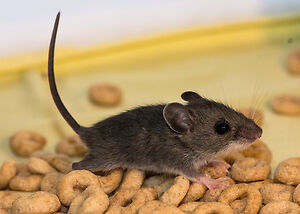
House mice can cause a lot of damage and contamination around homes and businesses as they need to eat around 20-30 times a day. They don’t actually eat a massive amount, but their constant trips out for food mean they can contaminate a lot of it very quickly. As they live in homes, they’re year-round pests that aren’t affected by the changing of the seasons.
Yellow-Necked Mice
The yellow-necked mouse is usually found in rural areas across the south of England. They look a lot like field mice but, as their name suggests, they have a ‘collar’ of yellow-brown fur around their neck.
Aside from this, they behave in much the same way as field mice. They live outdoors during the summer and only take shelter in outbuildings when the winter arrives. However, while field mice are territorial and won’t share their shelter with other mice, yellow-necked mice are a little happier to bunk up. 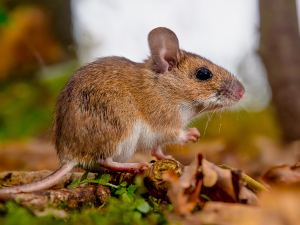 This means they can spread very quickly as you could end up with two or three mouse families rooming together in your shed over the winter!
This means they can spread very quickly as you could end up with two or three mouse families rooming together in your shed over the winter!
Signs of a Rodent Problem
It’s important to thoroughly investigate any suspected rodent problem before you look at what pest control products you need. Even if you know what the signs are, this will help you get a better idea of how severe the infestation is.
Chew Marks
Both rats and mice will chew almost anything – food, food packaging, wood, plastic, wires, clothing, and more. They do this to mark their territory, investigate their surroundings, and to wear their teeth down. This destructive habit is one reason why rodents are so dangerous as they can easily chew through electrical wires, causing power shortages and even fires. The size, number, and location of these chew marks can tip you off as to which rodent you’re dealing with. Larger marks around the home indicate a rat problem, but if the chew marks are mainly in outdoor areas, it’s more likely you’re dealing with a field mouse.
Nesting Material
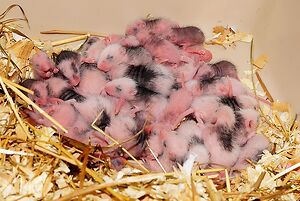 Rodents will shred up twigs, grass, paper, and fabric to make their nests. If you find scraps of these materials lying around, you probably have some rodents nesting around your property. Mice and black rats will all use whatever they can find to build nests, but if you do notice these scraps lying around, you can rule out brown rats. This is because brown rats make their nests in underground burrows.
Rodents will shred up twigs, grass, paper, and fabric to make their nests. If you find scraps of these materials lying around, you probably have some rodents nesting around your property. Mice and black rats will all use whatever they can find to build nests, but if you do notice these scraps lying around, you can rule out brown rats. This is because brown rats make their nests in underground burrows.
Rat Burrows
A brown rat’s burrow is a common sight in most parts of Britain, but not all of them are active. They’re small holes that are a few inches across, and – if the burrow is active – they have smooth, tightly-packed walls with clear entrances. You can test whether a burrow is active by blocking up the entrance with newspaper or other debris. If you check back a few days later and find that the entrance is clear again, you know it’s in use!
Droppings
It’s not pleasant, but examining any droppings will give you an idea of what kind of infestation you’re dealing with. The number of droppings will give you an idea of the size of the infestation you’re dealing with, while their size and shape will tell you whether you’re dealing with rats or mice.
Mouse droppings are very small and smooth. They look like tiny brown pellets with slightly pointed ends and are a little smaller than a grain of rice. Rat droppings, on the other hand, are larger. They also have more rounded ends.
You’ll find them in small piles or tracks along the rodents’ usual paths through your home. Usually, these paths trace around the very edge of a room, so be sure to check along skirting boards and under furniture.
Musty Odours
Rats and mice leave a strong smell everywhere they go. This is actually from their urine, which smells far worse than their poo does!
Agitated Dogs
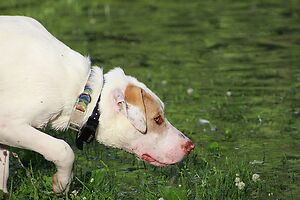 Dogs have sharper senses of smell and hearing than we do, so they can pick up on things we might miss. If they catch the unfamiliar scent of rodents in the house, they might become agitated. If you catch them intently sniffing or staring at a particular area of your home or garden – especially at dusk when rats and mice are more active - it might be worth investigating further.
Dogs have sharper senses of smell and hearing than we do, so they can pick up on things we might miss. If they catch the unfamiliar scent of rodents in the house, they might become agitated. If you catch them intently sniffing or staring at a particular area of your home or garden – especially at dusk when rats and mice are more active - it might be worth investigating further.
If you do own a dog, try to keep them away from anywhere you suspect the rats might be. It’s common knowledge that rats can carry a range of diseases which can be transferred to humans, but some people may not realise that many of these diseases can pass onto dogs as well. Dogs can catch illnesses like Weil’s disease and rat bite fever from rats, as well as a range of nasty parasites and fleas.
Sights and Sounds
Finally, you can confirm the presence of rodents by seeing and hearing them for yourself. Rodents are really fast and good at hiding, so if you catch a lot of them out in the open, this is a good reason to be concerned – it usually means all the good hiding spots are full!
You’ll probably hear them before you see them. They’re more active at night, so you might be able to hear them scratching and squeaking through the walls. If you do see them, they’ll probably try and hide right away, so don’t waste time trying to chase them – you just need to lay the right bait!
Getting Rid of Rodents
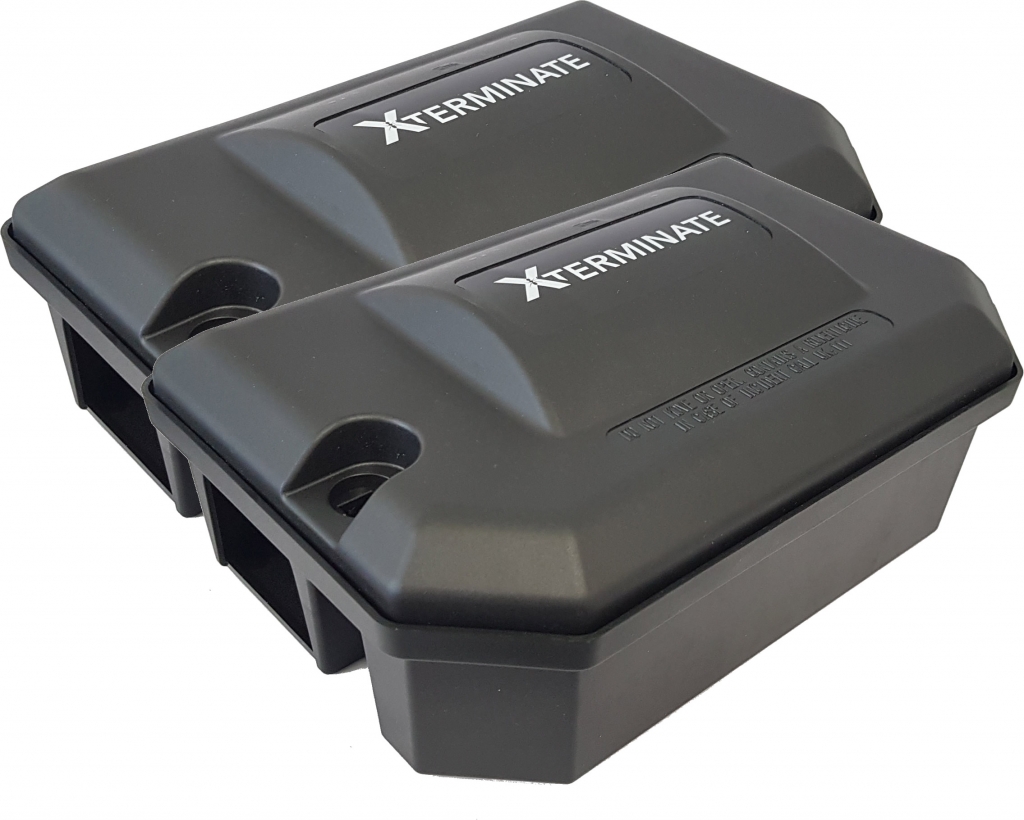 Now that you hopefully know what kind of rodent it is you’re dealing with, you can start to plan to get rid of them. With over 15 years’ experience in the pest control industry, we can safely say that the snap traps are largely a waste of time. For one, rats and mice are incredibly cautious creatures with surprisingly high levels of intelligence. They’re naturally wary of any changes to their environment. If you place a mousetrap in the middle of the room, it’ll stick out like a sore thumb and there’s a good chance the rodents will simply ignore it. Even if it does catch a rat or a mouse, you’ll also need to check the trap every day to ensure you don’t leave any decaying rodents in there. The smell of a rodent corpse will alarm the other pests, meaning they won’t go anywhere near the other traps.
Now that you hopefully know what kind of rodent it is you’re dealing with, you can start to plan to get rid of them. With over 15 years’ experience in the pest control industry, we can safely say that the snap traps are largely a waste of time. For one, rats and mice are incredibly cautious creatures with surprisingly high levels of intelligence. They’re naturally wary of any changes to their environment. If you place a mousetrap in the middle of the room, it’ll stick out like a sore thumb and there’s a good chance the rodents will simply ignore it. Even if it does catch a rat or a mouse, you’ll also need to check the trap every day to ensure you don’t leave any decaying rodents in there. The smell of a rodent corpse will alarm the other pests, meaning they won’t go anywhere near the other traps.
Your best bet is to pick up a rat bait station and some poison rat bait. This will help you deal with your rodent problem efficiently and effectively. The main reason that bait stations work so well is that they’re easy to blend in with the surroundings. It’s easy to tuck them away near a cupboard or a grain store where you can stack things on top of them and effectively dress them to look like just another part of the environment.
Our bait stations can be used with either our rat or mouse poison. Both of these poisons are specially formulated grains that are designed to appeal to all rodents. They have an added chocolatey aroma that they find irresistible, so they’ll be keen to investigate the bait station and take the bait. Once they’ve ingested the bait, the fast-acting poison inside the grains will kill them quickly and humanely. All you need to do is make sure you get the dosage right – this depends on the size of the animal you’re dealing with.
Rat and Mouse Poison Doses
As a guideline, check out the table below for a better idea of what doses you’ll need for each rodent. Bear in mind that the doses depend on the size of the rodent and the number of poison sachets you’ll need depends on how severe the infestation is.
| Species | Species Max Weight | Recommended Lethal Dose |
Grain Bait Sachets Needed |
Wax Block Sachets Needed |
|
|---|---|---|---|---|---|
| Yellow-Necked Mouse | 30g | 2.16g or 1.8g per 25g body weight | 1 | 1 | |
| Field Mouse | 35g | 2.52g or 1.8g per 25g body weight | 1 | 1 | |
| House Mouse | 45g | 3.24g or 1.8g per 25g body weight | 1-2 | 1 | |
| Brown Rat | 500g | 24-32g or 12-16g per 250g body weight | 10+ | 3+ | |
| Black Rat | 230g | 12-16g or 10-14g per 200g body weight | 5-10 | 1-2 | |
Where to Place Your Bait Station
If possible, you should place your locked bait station right next to the rats’ food supply. For example, if you find evidence of rats breaking into your kitchen cupboards, place the bait station inside or right next to the cupboard. If you have mice in a grain store, tuck the bait box beneath a sack or a crate and try to blend it in as best you can. Remove any easily-chewable cardboard food packets but don’t tidy things up too much – dramatic changes in the environment will just deter rodents.
Rat Poison Safety
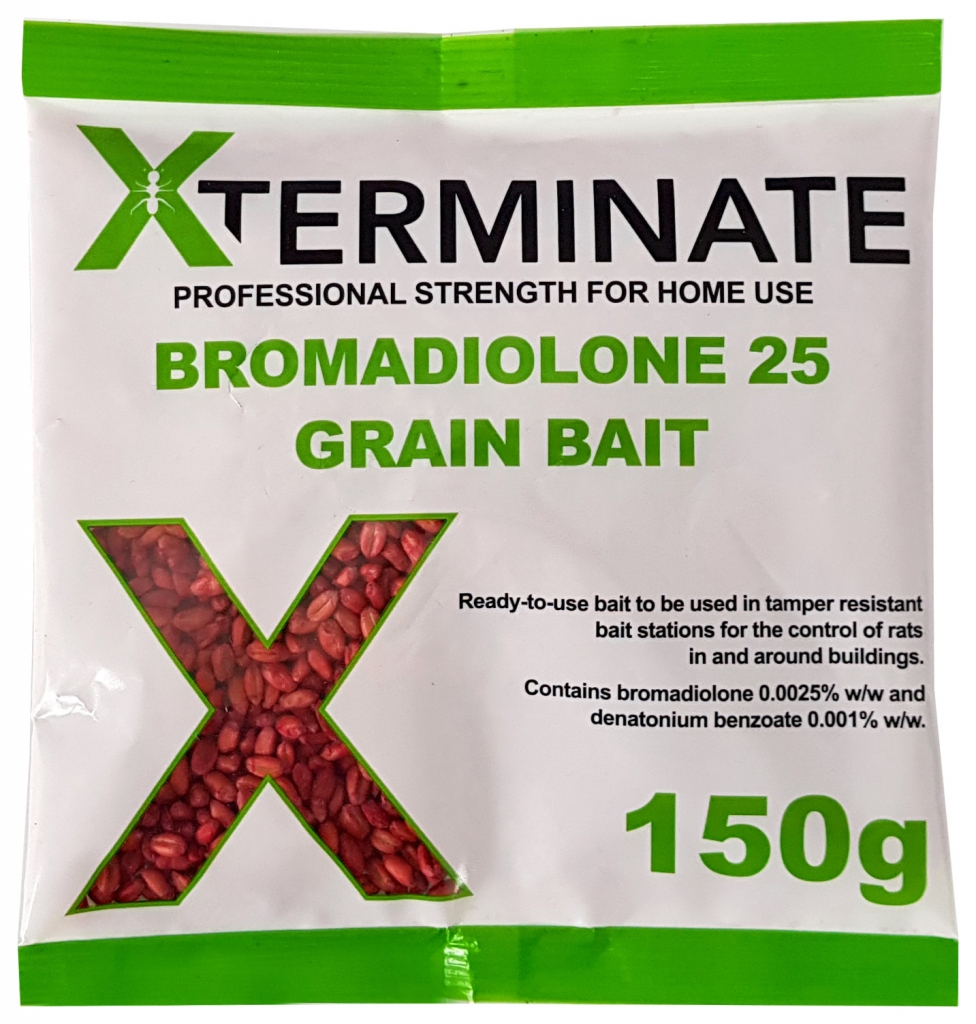 When dealing with rodent poison, there are naturally a few safety pointers you’ll need to follow. Obviously, it is poisonous, so you should keep it well out of reach of any pets or children in a locked container if possible. You should also never use it outside of one of our lockable bait stations. Always wear gloves when handling it and wash your hands after use just to be sure.
When dealing with rodent poison, there are naturally a few safety pointers you’ll need to follow. Obviously, it is poisonous, so you should keep it well out of reach of any pets or children in a locked container if possible. You should also never use it outside of one of our lockable bait stations. Always wear gloves when handling it and wash your hands after use just to be sure.
You should also ensure that any rodent remains are double-bagged and properly disposed of in your household waste bin. Don’t simply chuck them out – they’ll be eaten by wildlife and the poison can be passed on up the food chain.
Types of Rodent Poison
Rat and mouse poison both come in many different forms. To find out which is the best for your particular needs, check out our guide to rodent poison here.


